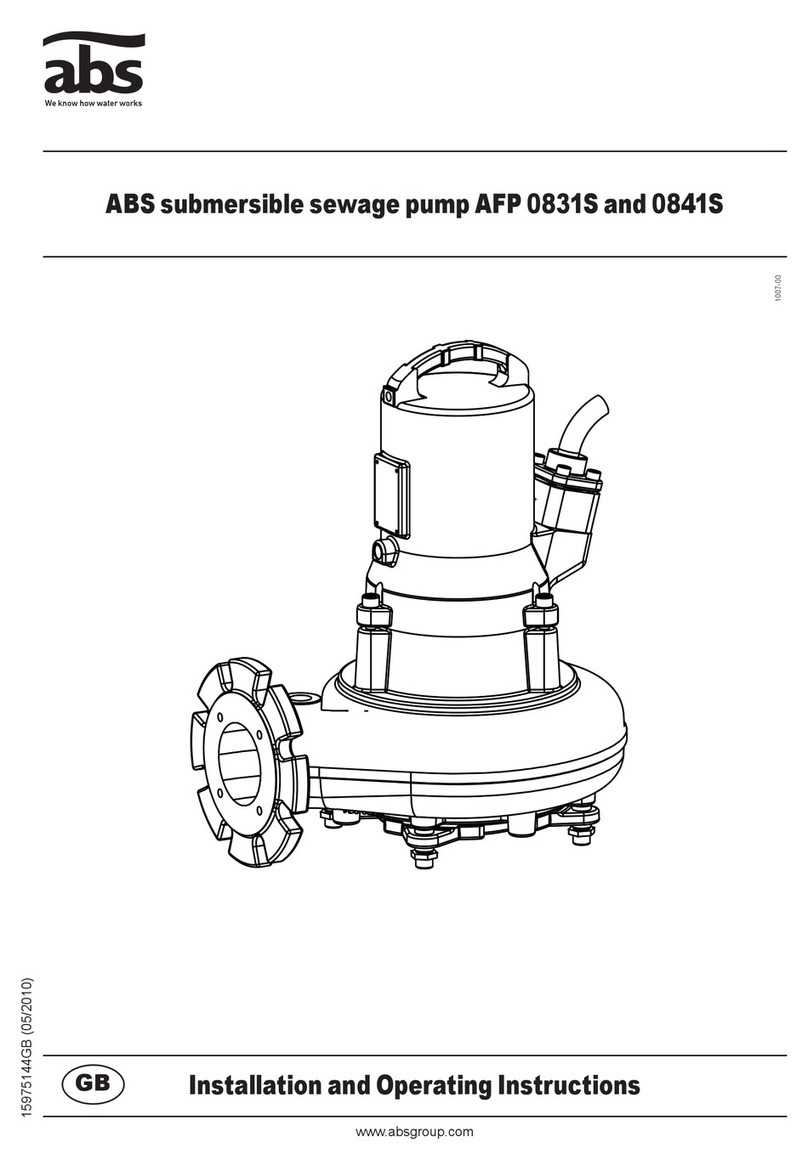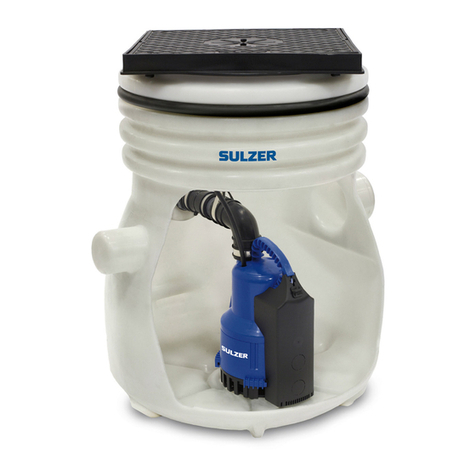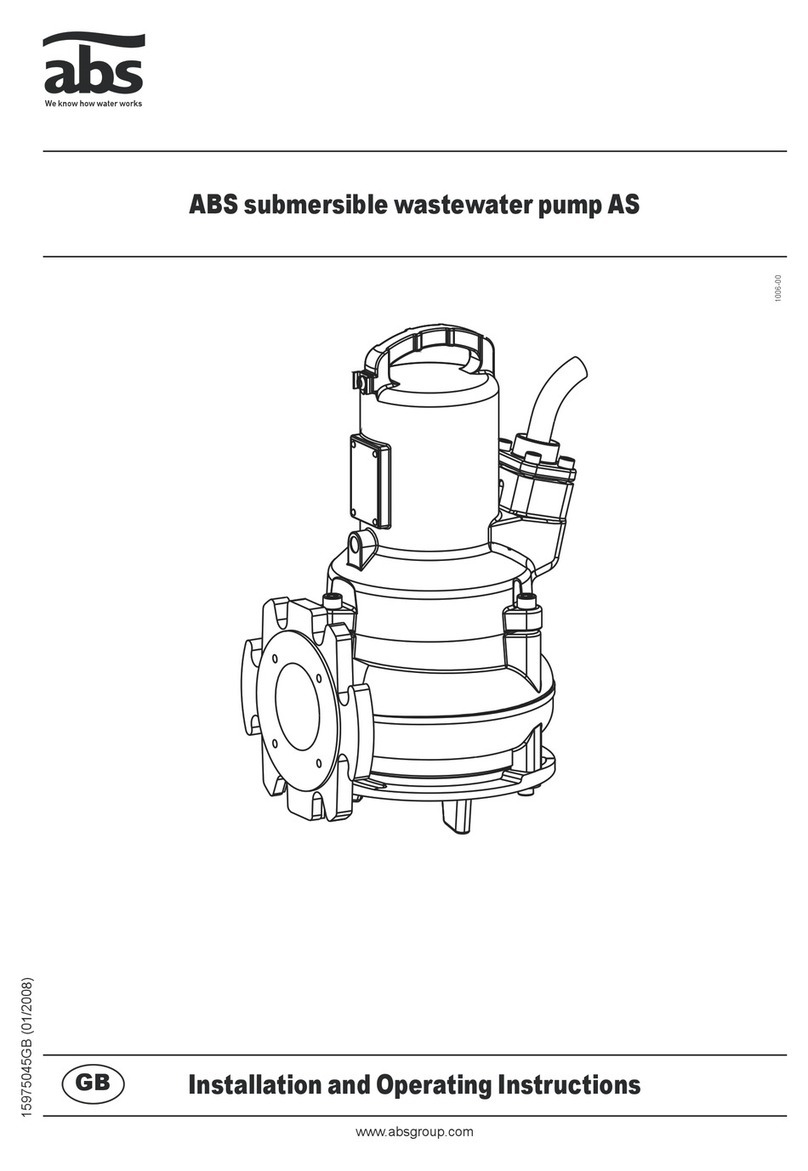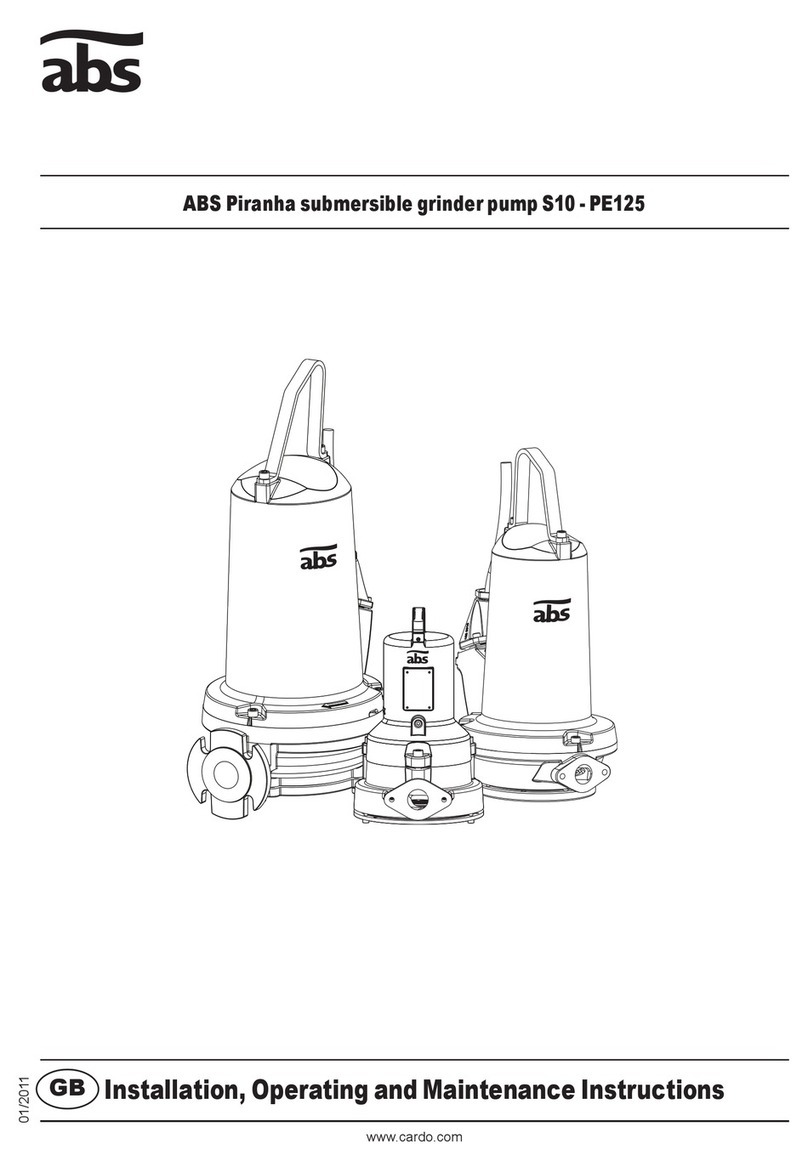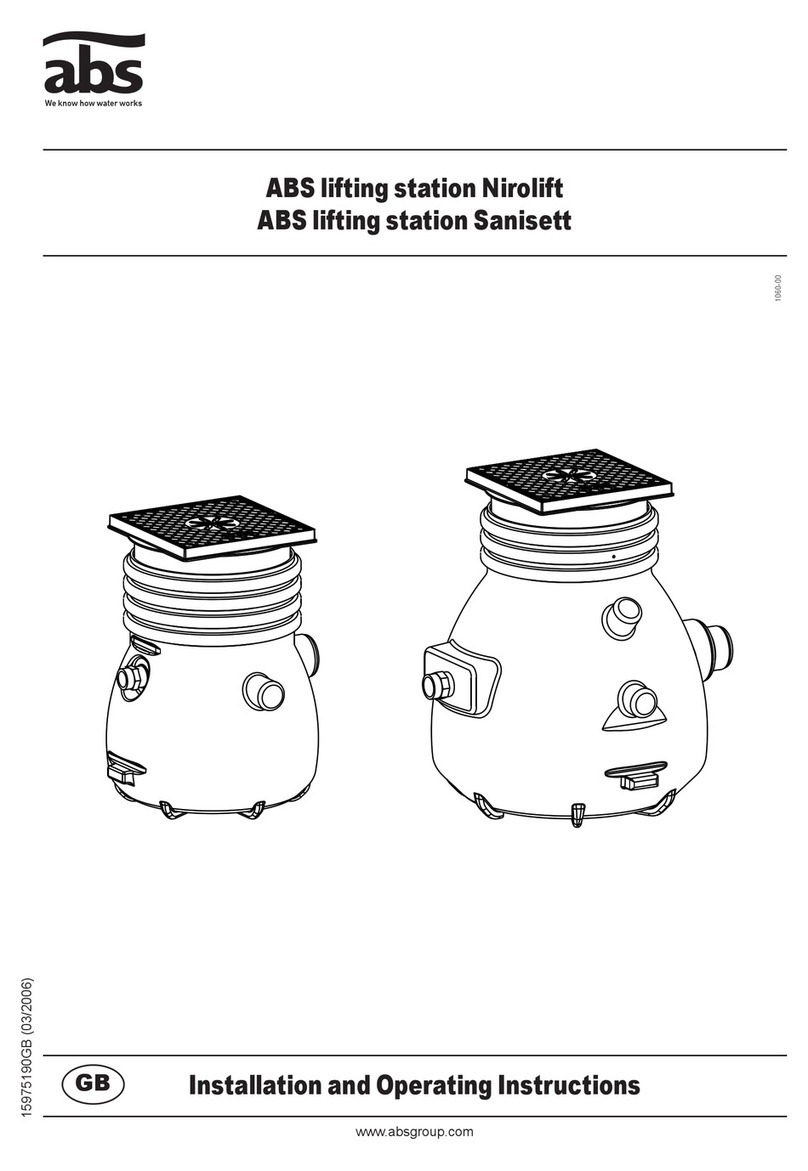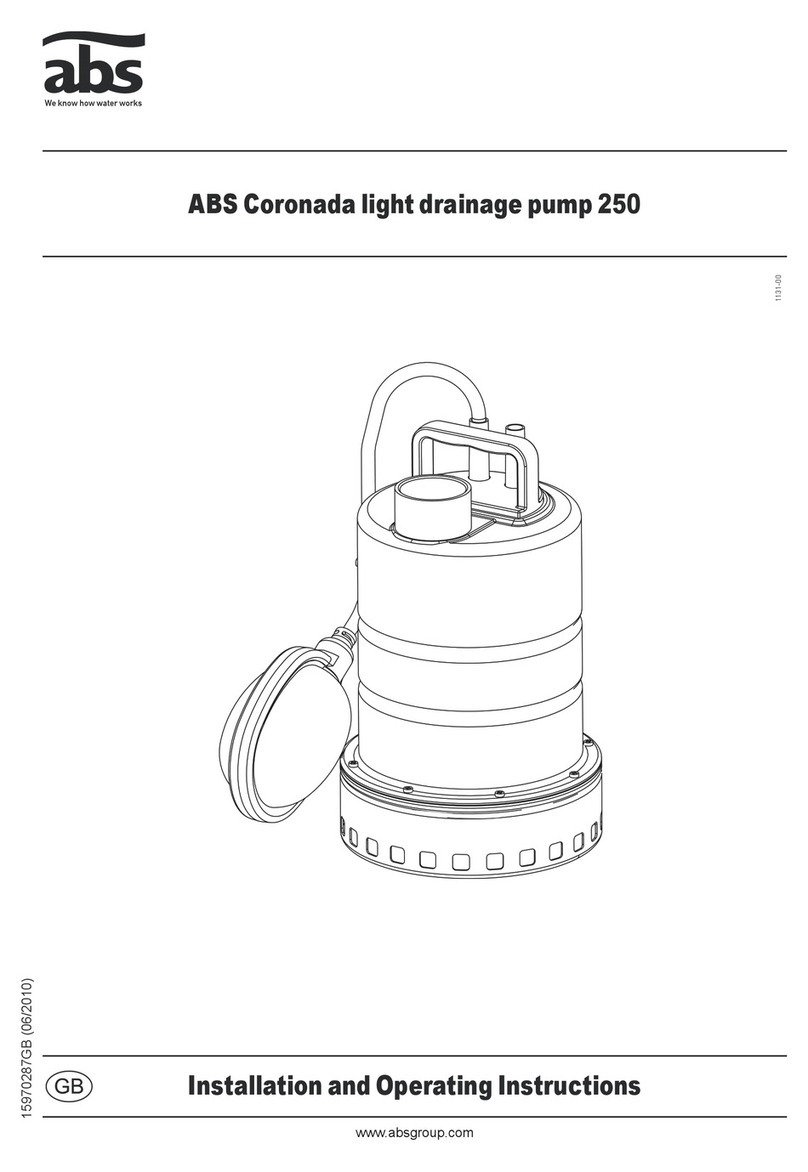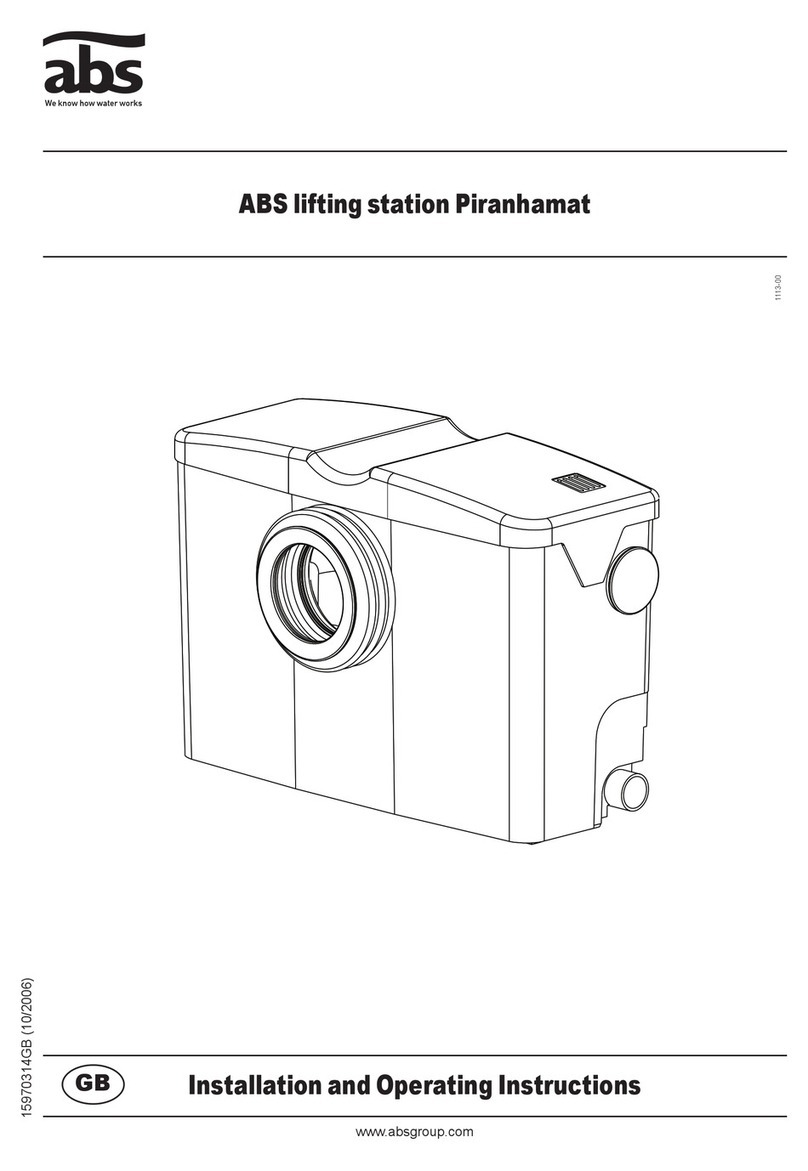2 Installation, Operating and Maintenance Instructions (Original Instructions)
ABS reserves the right to alter specifications due to technical developments
ABS submersible sewage pump XFP 80C - 201G
Contents
1 Application areas .......................................................................................................................................................3
1.1 Explosion-proof Approvals ...........................................................................................................................................3
2 Safety...........................................................................................................................................................................3
2.1 Use of explosion-proof pumps in explosive zones. ......................................................................................................3
3 Technical data.............................................................................................................................................................4
3.1 Nameplates...................................................................................................................................................................4
4 General design features ..........................................................................................................................................5
4.1 Design features PE1 & PE2..........................................................................................................................................5
4.2 Design features PE3.....................................................................................................................................................6
5 Transport and Storage...............................................................................................................................................7
5.1 Transport ......................................................................................................................................................................7
5.2 Storage .........................................................................................................................................................................7
5.2.1 Moisture protection of motor connection cable ............................................................................................................7
6 Mounting and Installation .........................................................................................................................................8
6.1 Installation examples ....................................................................................................................................................8
6.1.1 Submerged in concrete sump.......................................................................................................................................8
6.1.2 Dry-installed .................................................................................................................................................................9
6.2 Discharge Line............................................................................................................................................................ 10
7 Electrical Connection .............................................................................................................................................. 10
7.1 Temperature monitoring ............................................................................................................................................. 10
7.2 Seal monitoring........................................................................................................................................................... 10
7.3 Wiring Diagrams ......................................................................................................................................................... 11
8 Commissioning ........................................................................................................................................................ 12
8.1 Types of operation and frequency of starting ............................................................................................................. 12
8.2 Checking direction of rotation..................................................................................................................................... 12
8.3 Changing direction of rotation .................................................................................................................................... 13
9 Maintenance.............................................................................................................................................................. 13
9.1 General maintenance instructions.............................................................................................................................. 13
9.2 Maintenance of Lifting Stations in accordance with EN 12056.................................................................................. 13
9.3 Lubricant changing (PE1 & PE2) ................................................................................................................................ 14
9.4 Lubricant changing (PE3 - version without cooling jacket)......................................................................................... 15
9.5 Coolant changing (PE3 - version with cooling jacket) ................................................................................................ 16
9.6 Oil and glycol quantities (litres)................................................................................................................................... 17
9.7 Bottom plate adjustment............................................................................................................................................. 18
9.7.1 Instructions on how to adjust the bottom plate........................................................................................................... 18
9.8 Bearings and Mechanical Seals ................................................................................................................................. 19
9.9 Changing the power cable (PE1 & PE2)..................................................................................................................... 19
9.10 Cleaning...................................................................................................................................................................... 19
9.11 Venting of the volute ................................................................................................................................................... 19
10 Troubleshooting Guide............................................................................................................................................20
EC Declaration of Conformity ..............................................................................................................................................21
ABS submersible sewage pump XFP
PE1 (50 Hz) PE2 (50 Hz) PE3 (50 Hz) PE1 (60 Hz) PE2 (60 Hz) PE3 (60 Hz)
80C-CB1 80E-CB1 100G-CB1 150G-VX 80C-CB1 80E-CB1 100G-CB1 150G-VX
80C-VX 81E-VX 100G-VX 200G-CB1 80C-VX 81E-VX 100G-VX 200G-CB1
81C-VX 100E-CB1 101G-CB1 201G-CB2 81C-VX 100E-CB1 101G-CB1 201G-CB2
100C-CB1 100E-VX 101G-VX 100C-CB1 100E-VX 101G-VX
100C-VX 150E-CB1 150G-CB1 100C-VX 150E-CB1 150G-CB1



















